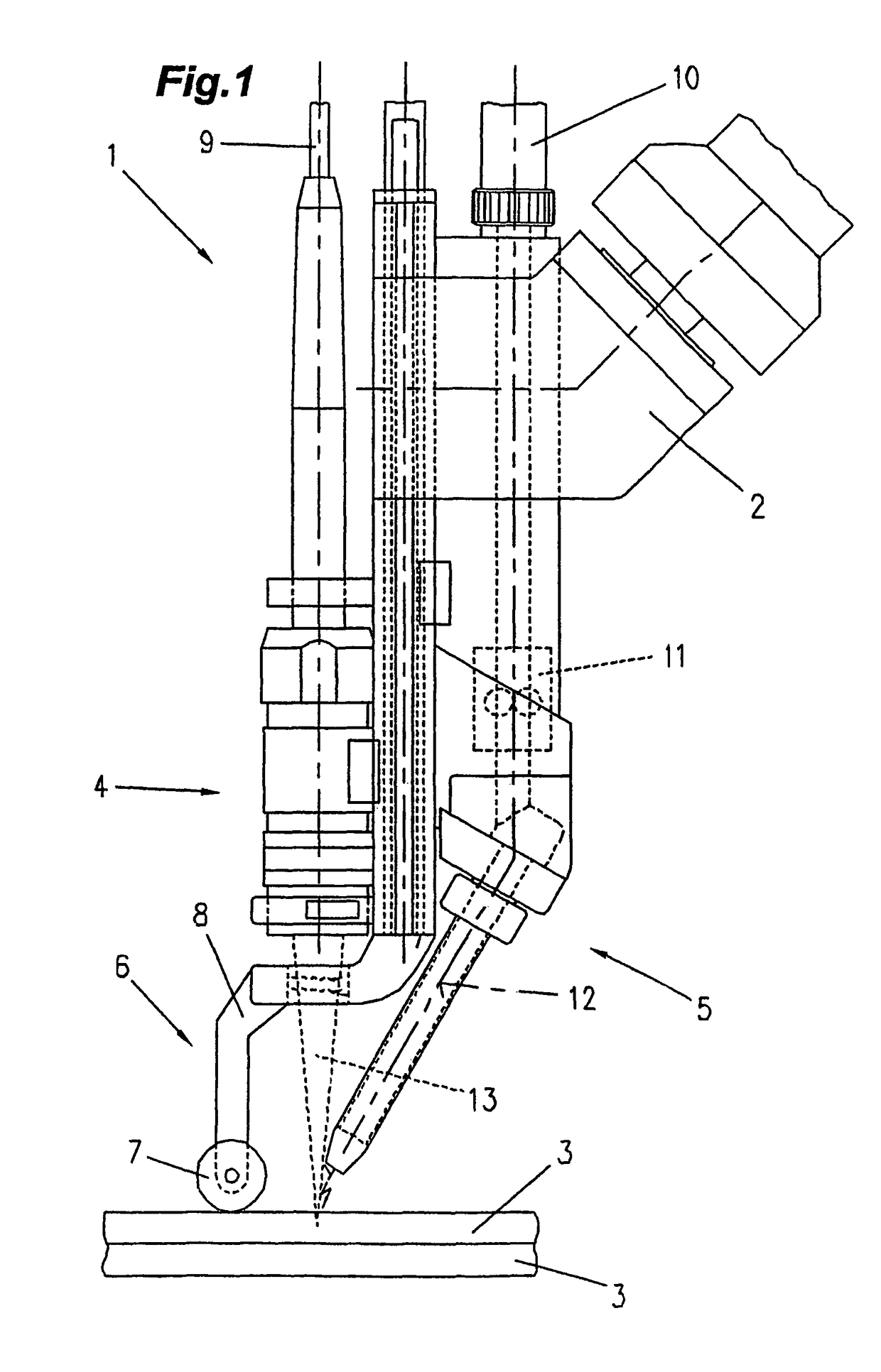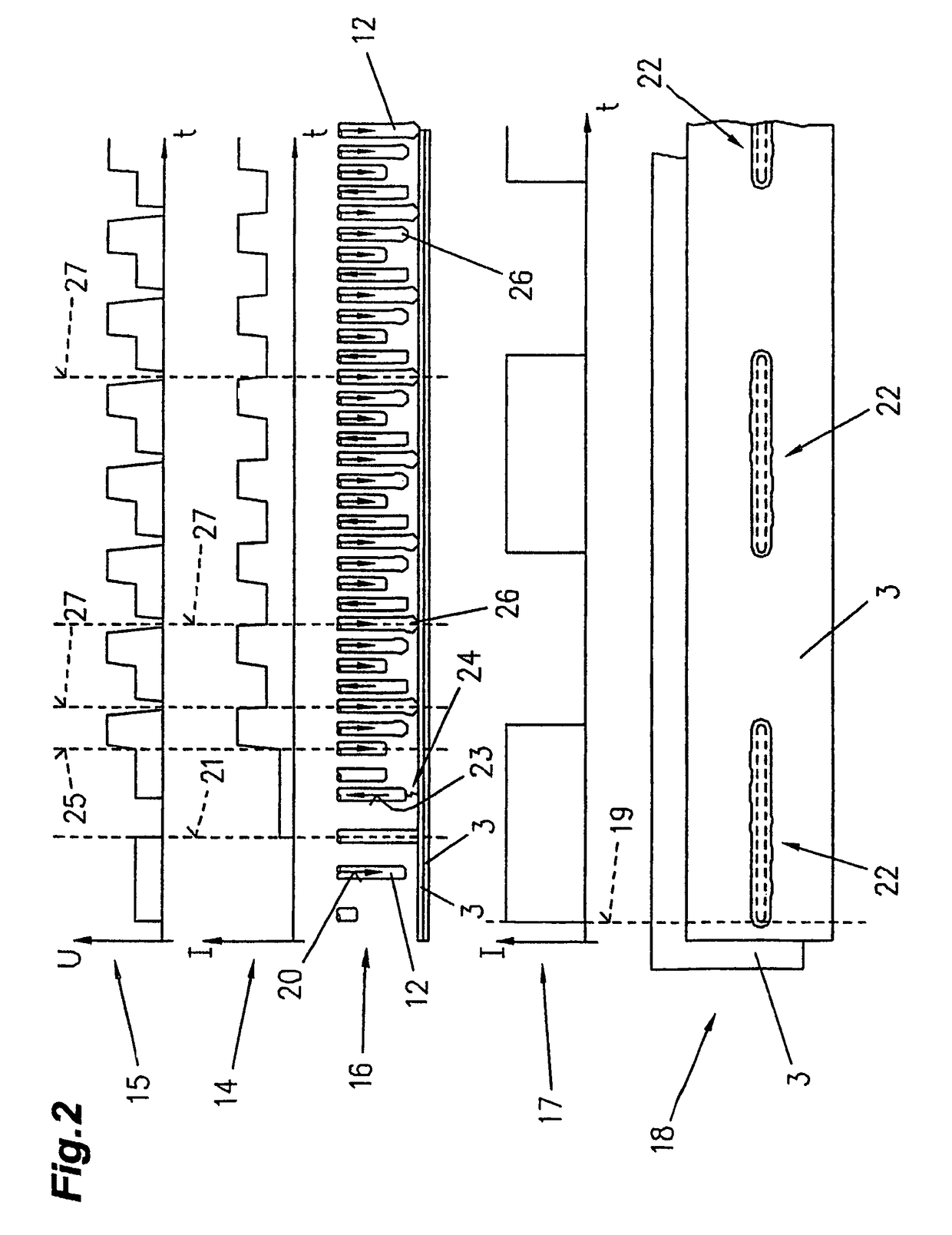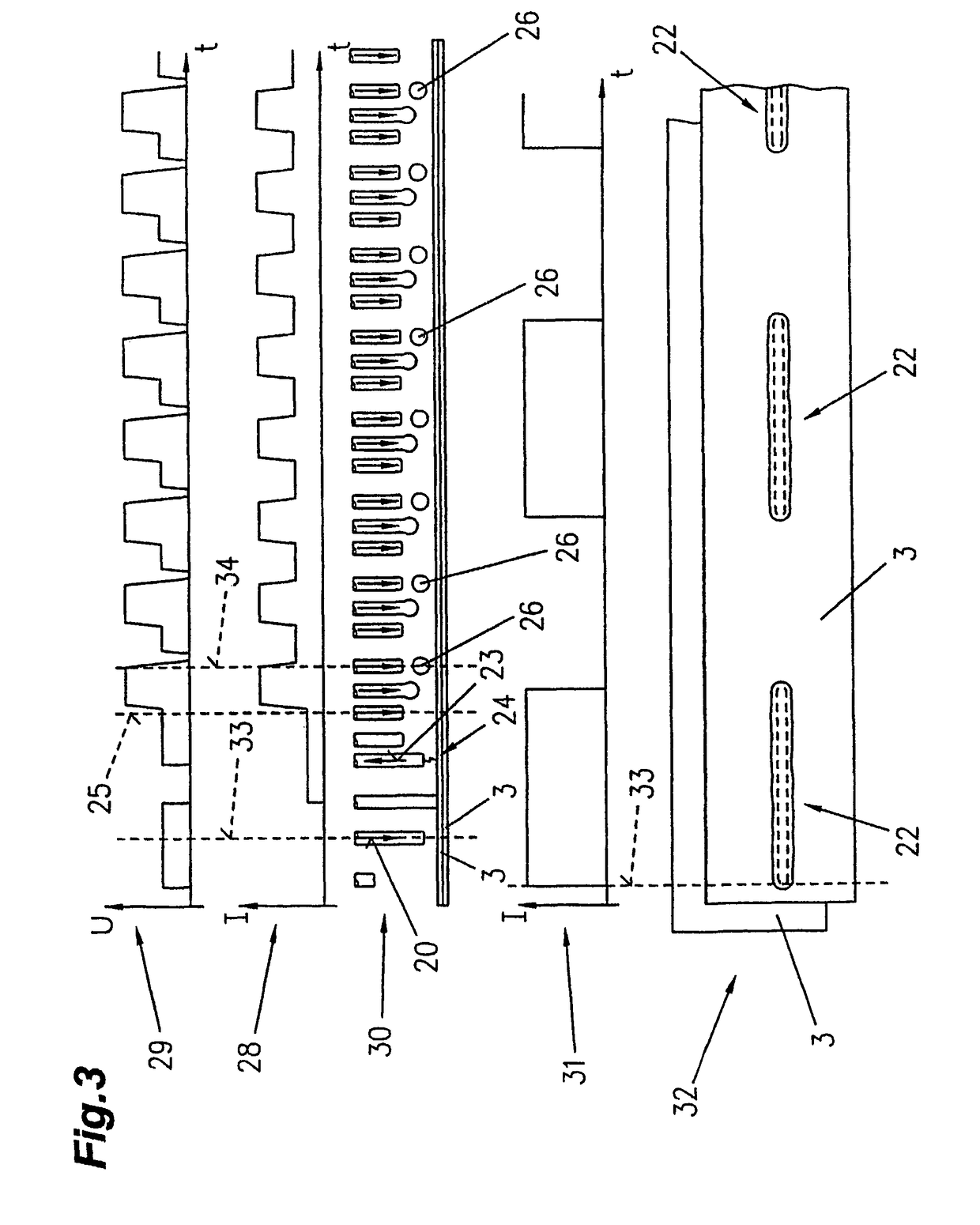Laser hybrid welding method and laser hybrid welding torch using a zinc and/or carbon and/or aluminum-containing rod
Inactive Publication Date: 2013-06-25
FRONIUS INTERNATIONAL GMBH
View PDF31 Cites 19 Cited by
- Summary
- Abstract
- Description
- Claims
- Application Information
AI Technical Summary
Benefits of technology
This patent text describes a method for welding coated sheet metals with the goal of minimizing or eliminating the formation of inclusions caused by the evaporation of the coating. The method also aims to provide stability and tightness to the weld seam and to minimize the time and cost of preparing the sheet metals for welding. Additionally, the text discusses the use of a particular filler material in combination with a laser hybrid welding process to achieve a tight and stable weld seam without the need for post-welding finishing. The use of a zinc, carbon, or aluminum content welding wire in combination with a zinc coated sheet metal further enhances the harmonization process and the production of a tight weld seam without any finishing operations.
Problems solved by technology
Although it is pointed out that even coated workpieces can be welded together, the problems caused by the evaporation of the coating are not discussed, nor is any solution to overcome those problems suggested.
Method used
the structure of the environmentally friendly knitted fabric provided by the present invention; figure 2 Flow chart of the yarn wrapping machine for environmentally friendly knitted fabrics and storage devices; image 3 Is the parameter map of the yarn covering machine
View moreImage
Smart Image Click on the blue labels to locate them in the text.
Smart ImageViewing Examples
Examples
Experimental program
Comparison scheme
Effect test
example 1
Electrolytic zinc coating ZE75 / 75 according to EN 10152
Stitch seam in the lap joint:
Welding wire: SAF DUAL ZN®
vs: 3 m / min
I: 50 A
vD: 1.6 m / min
U: 12.2 V
Distance: 2 mm
PL: 3.9 kW
Focus diameter: 0.8 mm
example 2
Z 100 galvanized zinc coating: zinc layer thickness: 7.5 μm Butt seam
Welding wire: SAF DUAL ZN®
vs: 2.4 m / min
the structure of the environmentally friendly knitted fabric provided by the present invention; figure 2 Flow chart of the yarn wrapping machine for environmentally friendly knitted fabrics and storage devices; image 3 Is the parameter map of the yarn covering machine
Login to View More PUM
| Property | Measurement | Unit |
|---|---|---|
| Distance | aaaaa | aaaaa |
| Distance | aaaaa | aaaaa |
| Distance | aaaaa | aaaaa |
Login to View More
Abstract
The invention relates to a method for welding coated sheet metal (3), which comprises at least one laser (13) and at least one shielded arc unit (5) and a rod feeding device (11) for a welding rod (12). The aim of the invention is to provide a method or a device of the aforementioned kind which allows fo˜ reducing or completely avoiding inclusions such as are e.g. caused by the evaporation of the coating of the metal sheet (3). For this purpose, a clamping device (6) is used for positioning the coated metal sheet (3) without substantial gaps between the individual sheets. A material having a zinc and / or carbon and / or aluminum content is used as the weld metal or welding rod (12).
Description
CROSS REFERENCE TO RELATED APPLICATIONS[0001]Applicants claim priority under 35 U.S.C. §119 of Austrian Application No. A802 / 2004 filed May 10, 2004. Applicants also claim priority under 35 U.S.C. §365 of PCT / AT2005 / 000156 filed May 9, 2005. The international application under PCT article 21(2) was not published in EnglishBACKGROUND OF THE INVENTION[0002]1. Field of the Invention[0003]The invention relates to a method for welding coated sheet metals using a laser hybrid welding process, wherein at least one laser process and one shielding gas welding process are carried out, with a filler material being supplied to the welding site via the shielding gas welding process.[0004]Moreover, the invention relates to a method for starting a laser hybrid welding process for welding coated sheet metals, wherein at least one laser process and one shielding gas welding process are carried out with the laser process preceding the shielding gas welding process, and the shielding gas welding proce...
Claims
the structure of the environmentally friendly knitted fabric provided by the present invention; figure 2 Flow chart of the yarn wrapping machine for environmentally friendly knitted fabrics and storage devices; image 3 Is the parameter map of the yarn covering machine
Login to View More Application Information
Patent Timeline
 Login to View More
Login to View More IPC IPC(8): B23K26/24B23K9/173B23K26/02B23K26/14B23K26/32B23K26/42B23K28/02B23K35/02B23K35/30
CPCB23K9/173B23K26/023B23K26/246B23K26/3206B23K26/3293B23K26/421B23K26/1429B23K35/0266B23K35/3053B23K28/02B23K2201/18B23K2201/34B23K2203/04B23K26/037B23K26/32B23K26/244B23K26/60B23K35/28B23K35/282B23K35/286B23K35/0255B23K35/0261B23K35/24B23K26/348B23K2101/18B23K2101/34B23K2103/04B23K2103/08B23K2103/50
Inventor MIESSBACHER, GERHARDRUHRNOSSL, MANFRED
Owner FRONIUS INTERNATIONAL GMBH
Features
- R&D
- Intellectual Property
- Life Sciences
- Materials
- Tech Scout
Why Patsnap Eureka
- Unparalleled Data Quality
- Higher Quality Content
- 60% Fewer Hallucinations
Social media
Patsnap Eureka Blog
Learn More Browse by: Latest US Patents, China's latest patents, Technical Efficacy Thesaurus, Application Domain, Technology Topic, Popular Technical Reports.
© 2025 PatSnap. All rights reserved.Legal|Privacy policy|Modern Slavery Act Transparency Statement|Sitemap|About US| Contact US: help@patsnap.com



